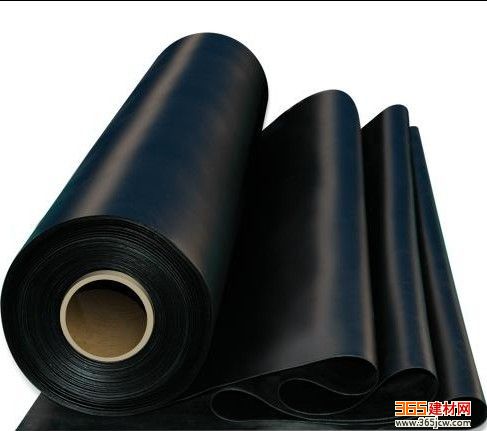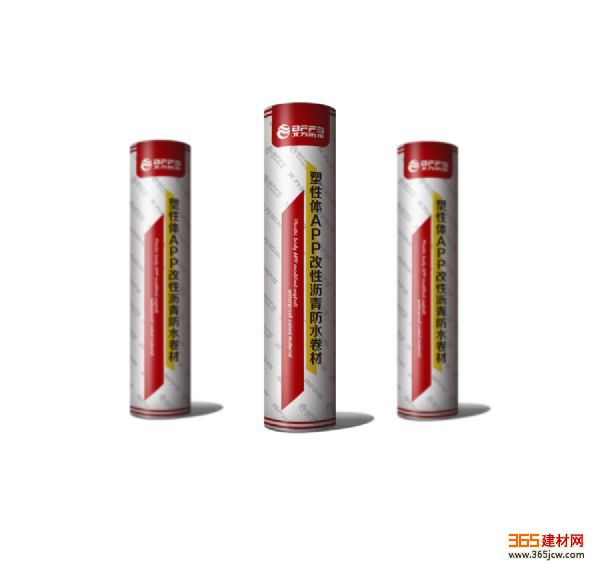What is an app waterproof membrane? The waterproof membrane is made of polyester felt or glass fiber felt for the foundation, and the random polypropylene or polyolefin polymer is used as the modifier. The two sides are covered with insulation material made of polyethylene, fine sand, powder or mineral particles. The modified bitumen membrane has the advantages of heat resistance, cold resistance, corrosion resistance, anti-aging, and good thermoplasticity. It is widely used in industrial waterproofing projects.
We all know that engineering waterproofing and home improvement waterproofing are different in both materials and construction methods. For example, waterproof waterproof membranes are often used in construction projects and are rarely seen in daily household life. What is the app waterproof membrane?

APP Modified Asphalt waterproofing membrane is made of polyester felt or glass fiber mat as the base, with random polypropylene (APP) or polyolefin type polymer (APAO, APO) as modifier, both sides covered with insulation material Modified bitumen membrane made of polyethylene, fine sand, powder or mineral particles (collectively referred to as APP membrane).
APP waterproof material has the advantages of heat resistance, cold resistance, corrosion resistance, anti-aging, and good thermoplasticity. It has high tensile strength, large elongation, strong tear resistance, and high ability to withstand cracks in the base layer. APP waterproof material can be cold-stick or hot-melt, either as a single layer or as a multilayer.
The difference between app waterproof membrane and sbs waterproof membraneSBS waterproofing membrane uses SBS modified asphalt to impregnate and coat the tire base, and both sides are coated with elastomer or plastic body asphalt coating layer, coated with fine sand or waterproof membrane made of polyethylene film, with good The waterproof performance and anti-aging performance have the characteristics of high temperature, no flow, no brittle crack at low temperature, simple construction, no pollution and long service life.
APP waterproofing membrane is made of polyester felt or glass fiber mat as the base, and atactic polypropylene (APP) or polyolefin polymerized (APAO, APO) is used as dip coating for modified asphalt and covered on both sides with insulating material. waterproof materials. Compared with SBS modified bitumen membrane, APP modified bitumen membrane has better high temperature resistance and is more suitable for hot areas.
App waterproofing membrane construction process1. Clean the base: The base surface should be solid and clean. Wet and moist enough.
2. Wipe cement paste layer: wipe cement slurry on the base layer. The width of the cement slurry is 300mm wider than the long and short sides of the SBS/APP self-adhesive waterproofing membrane, and the guide rail is used to ensure the flatness of the cement slurry. (Note: The thickness of cement slurry is 3-5mm.)
3. Remove the insulating material on the underside of the SBS/APP self-adhesive waterproofing membrane. Place the web on the grout. The web and the web are parallel butt joints. The joints should be controlled within 3-5 mm (also Lapping can be used to remove the release paper at the lap joints. The web and the web are affixed to each other approximately 60-80mm). Using a wooden trowel or rubber plate, beat the top surface of the coil, exhaust, and extract the slurry. Keep the web glued to the slurry.

4. Cool for 24-48 hours. The higher the temperature, the shorter the time required.
5. Interface seal: Additional self-adhesive sealed bag seals can be used. When the interface is sealed, the separator on the upper surface of the web overlaps and then the self-adhesive seal is sealed. If the overlapping parts are contaminated, clean the contaminated parts now, then apply polyurethane or modified bitumen paste, and then stick the self-adhesive sealing tape. (If lapped, seal directly with bituminous or polyurethane grease)
6. The nodes are reinforced after the large-scale coils are finished. Gutters, parapets, cornices, flue roots, vents, etc. require additional treatment. Reinforcements need to be sealed with bitumen or polyurethane ointment.